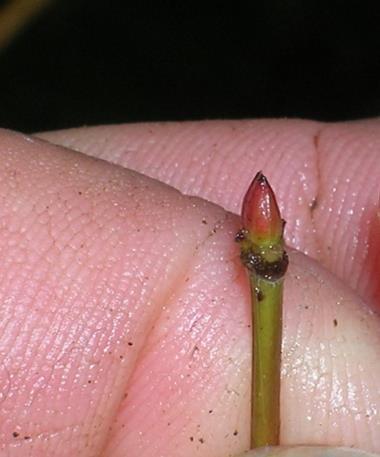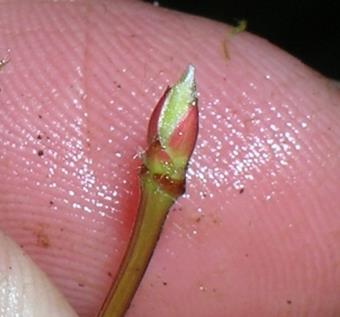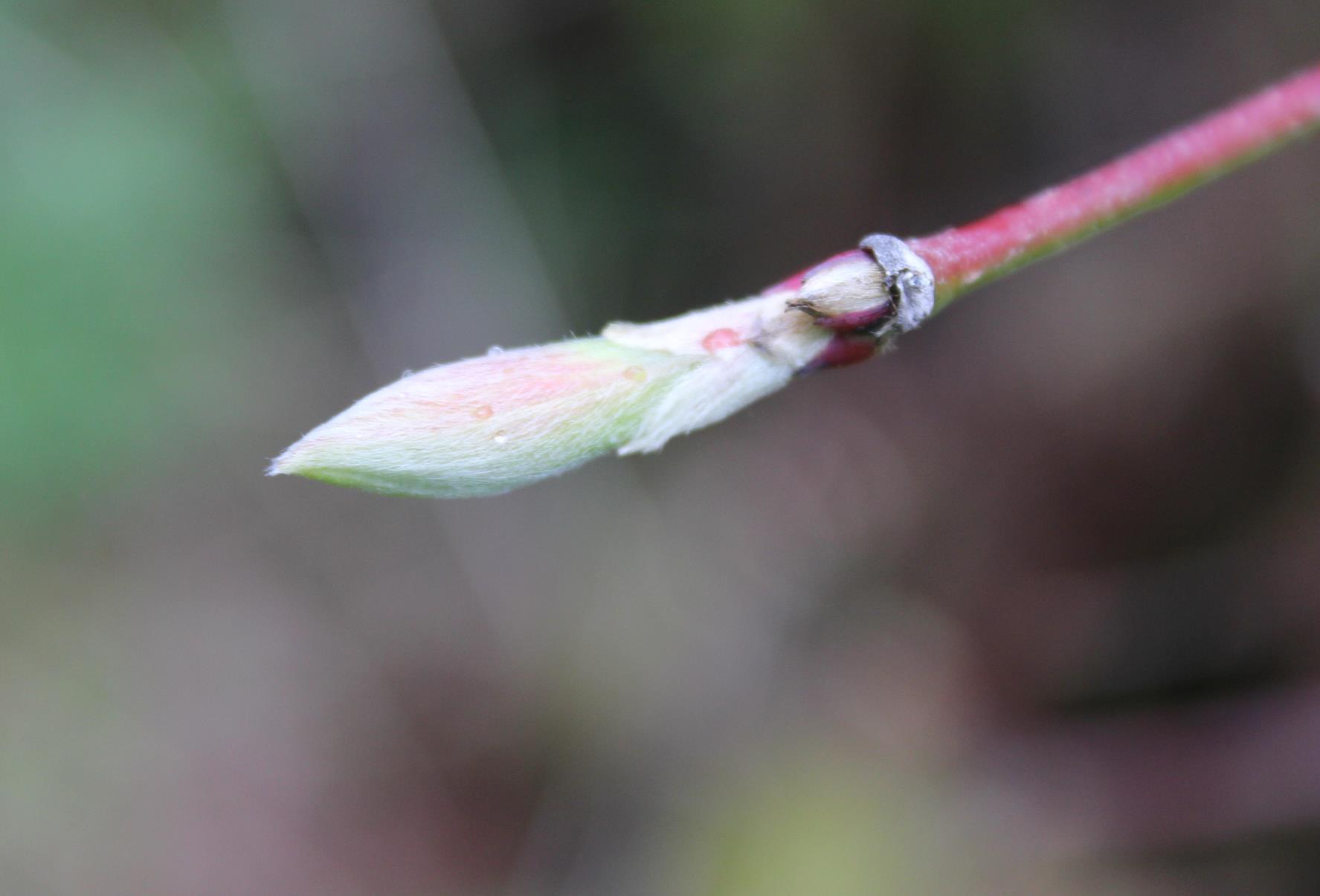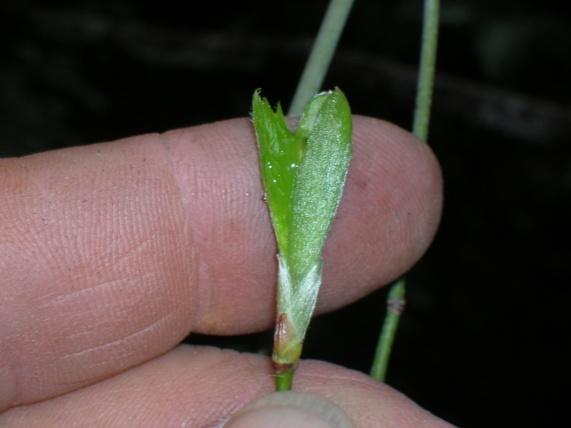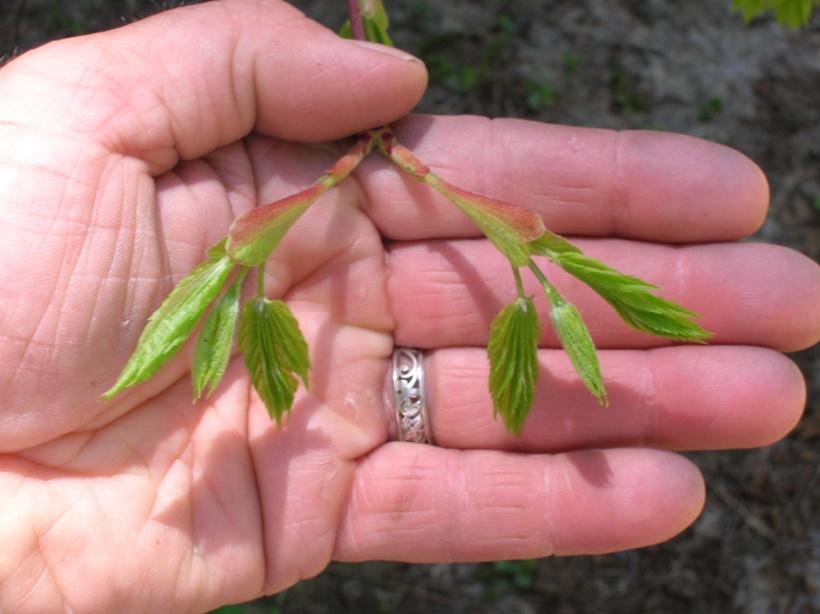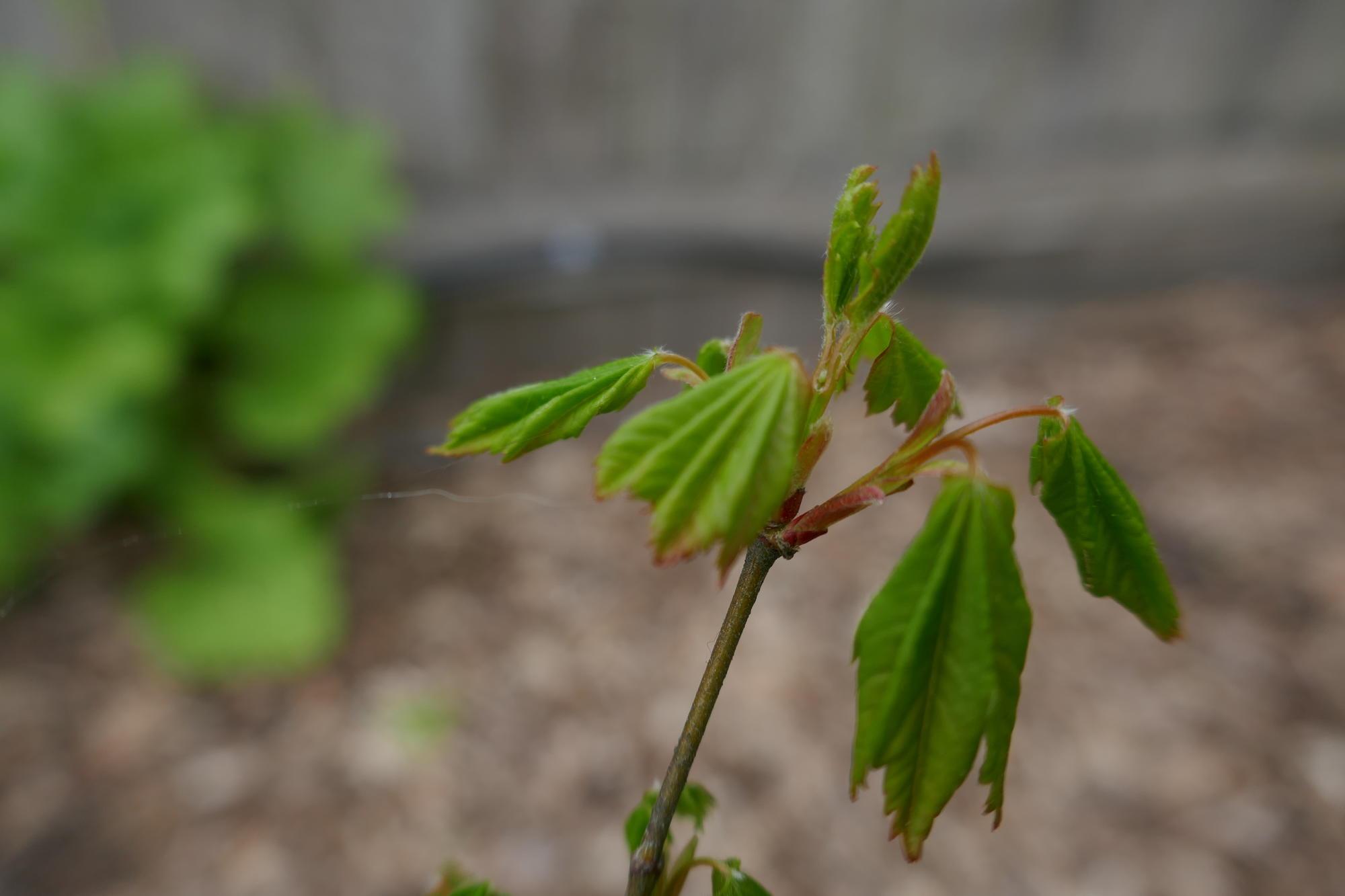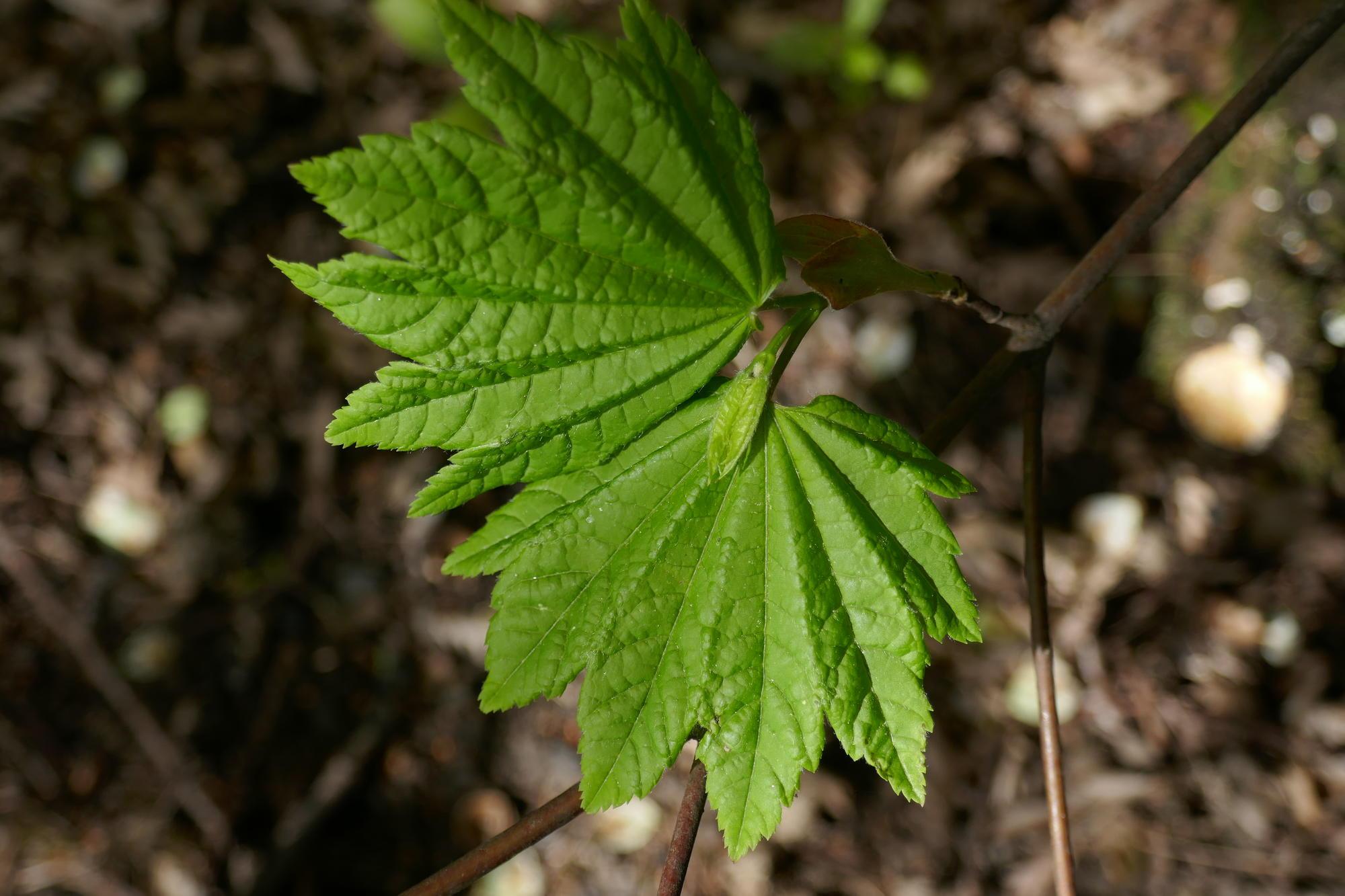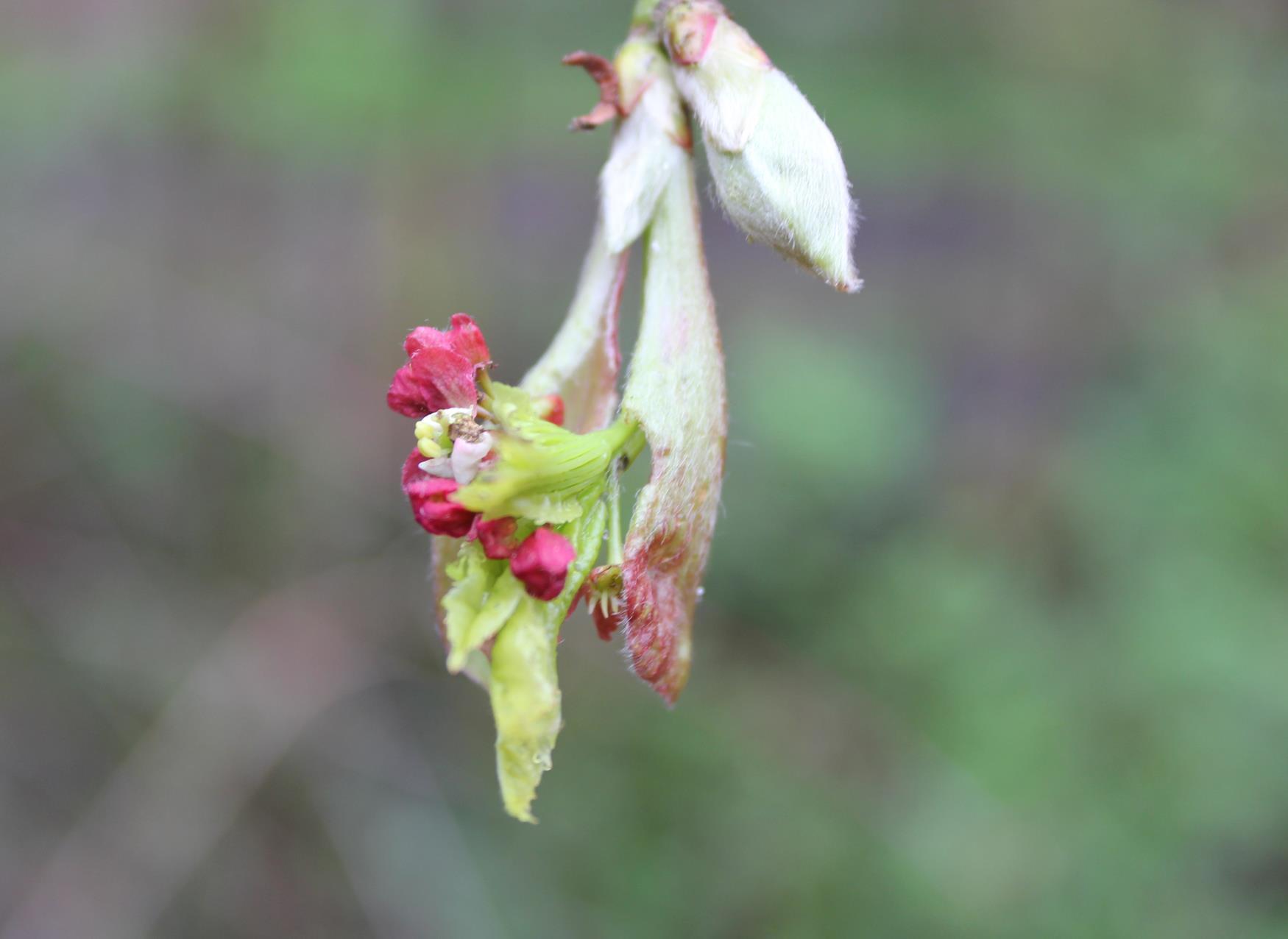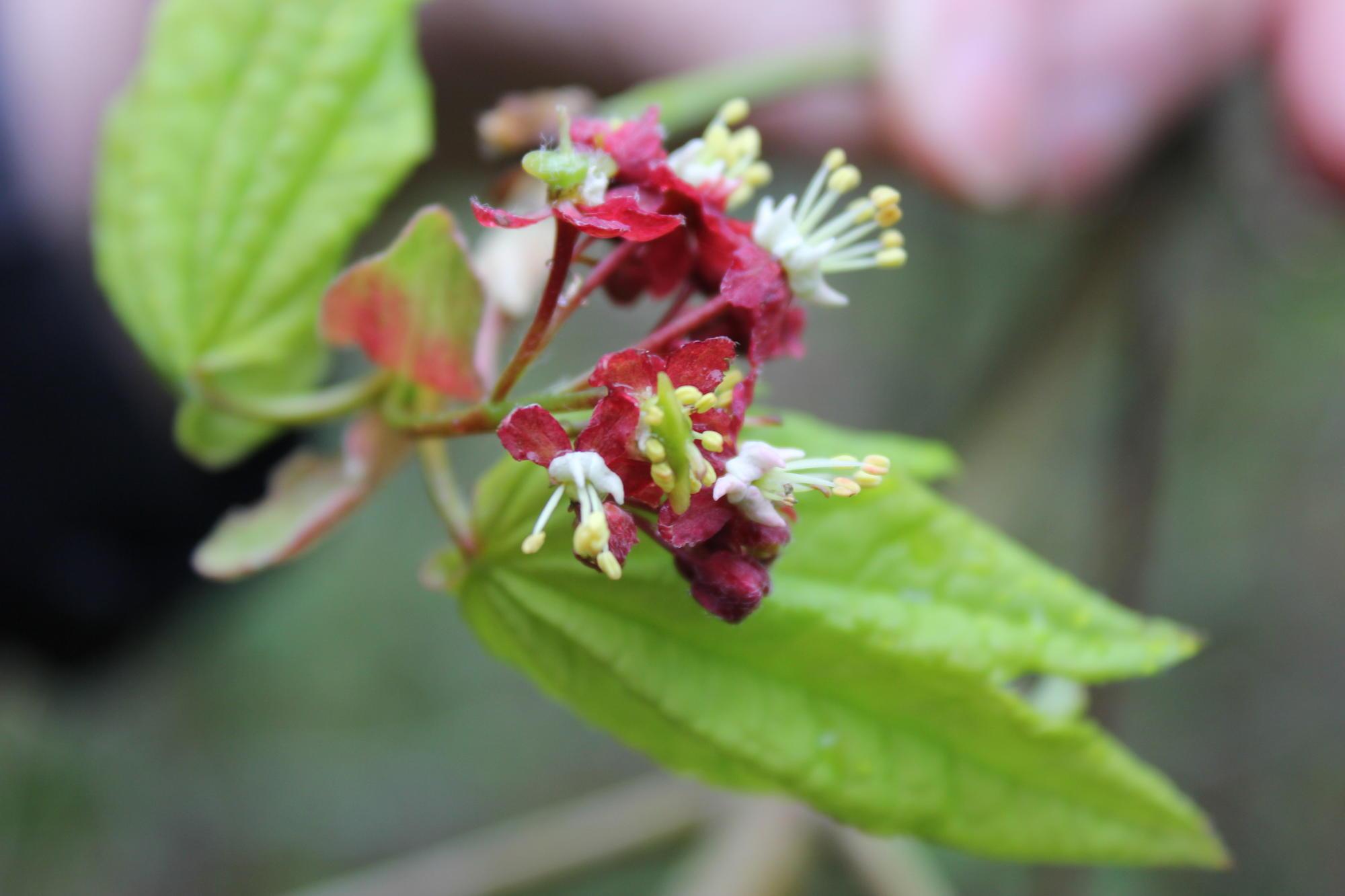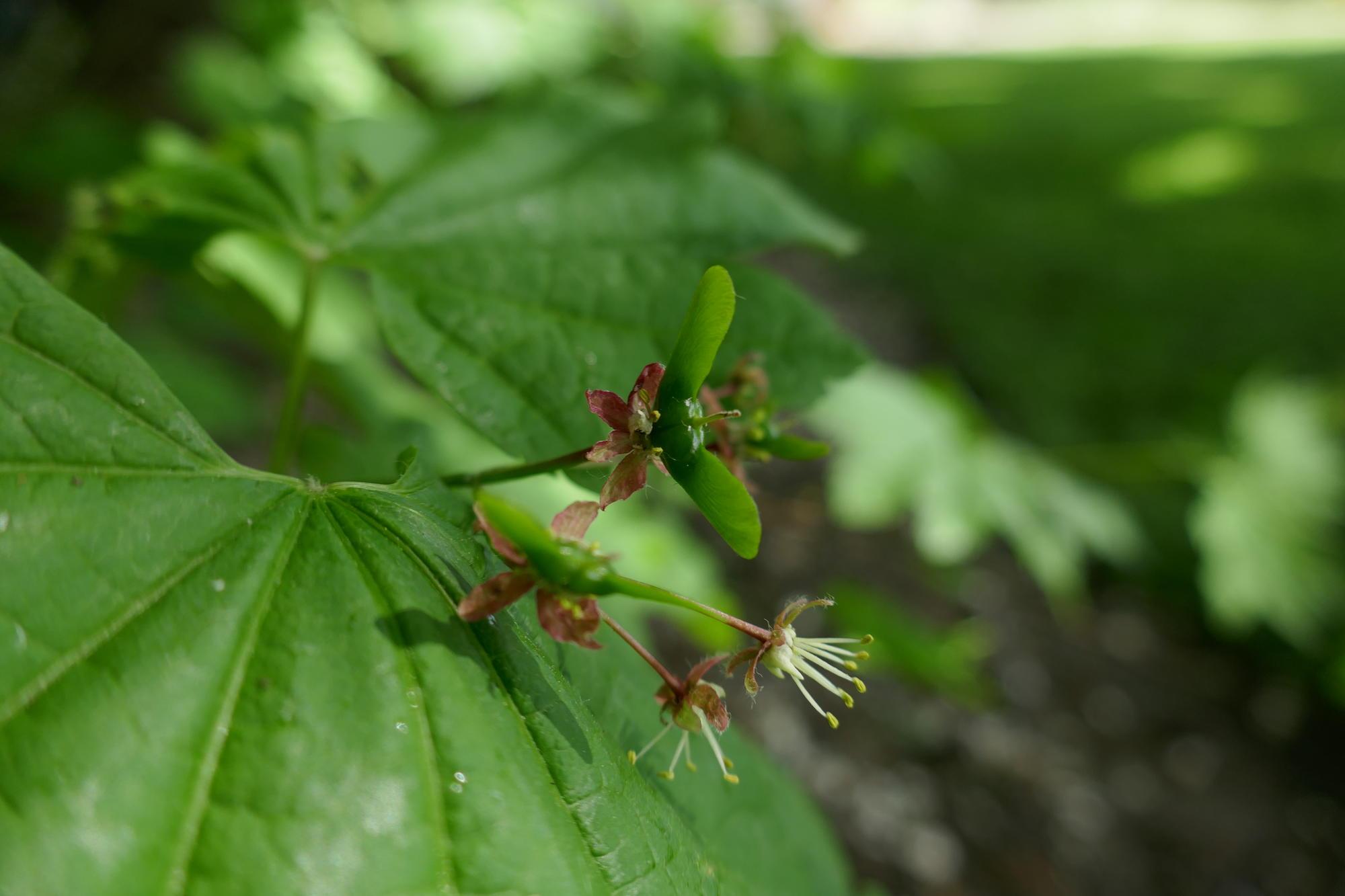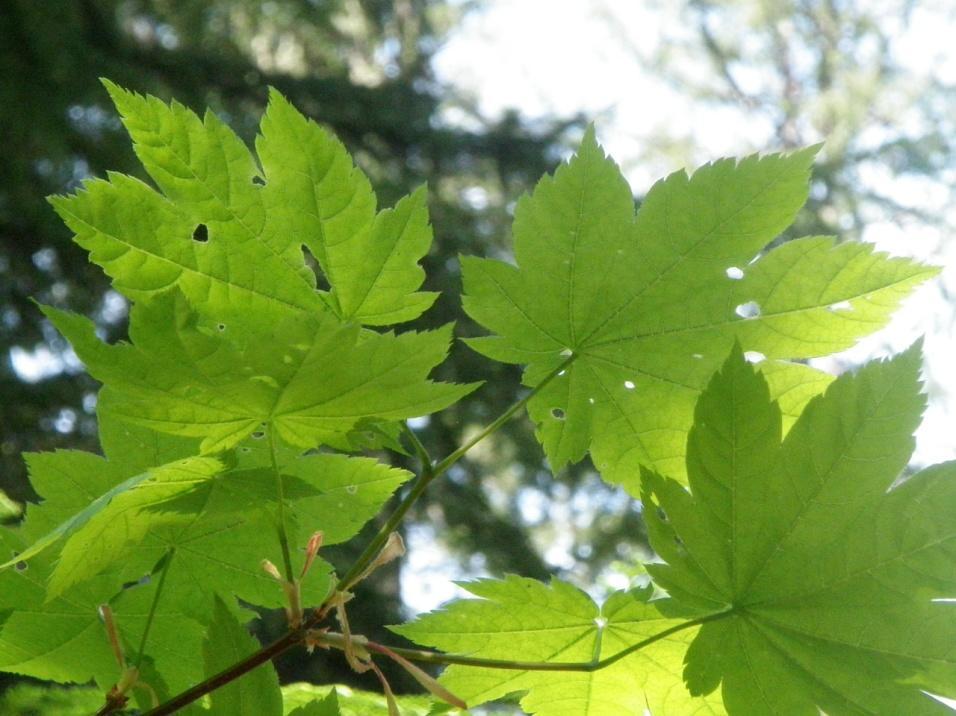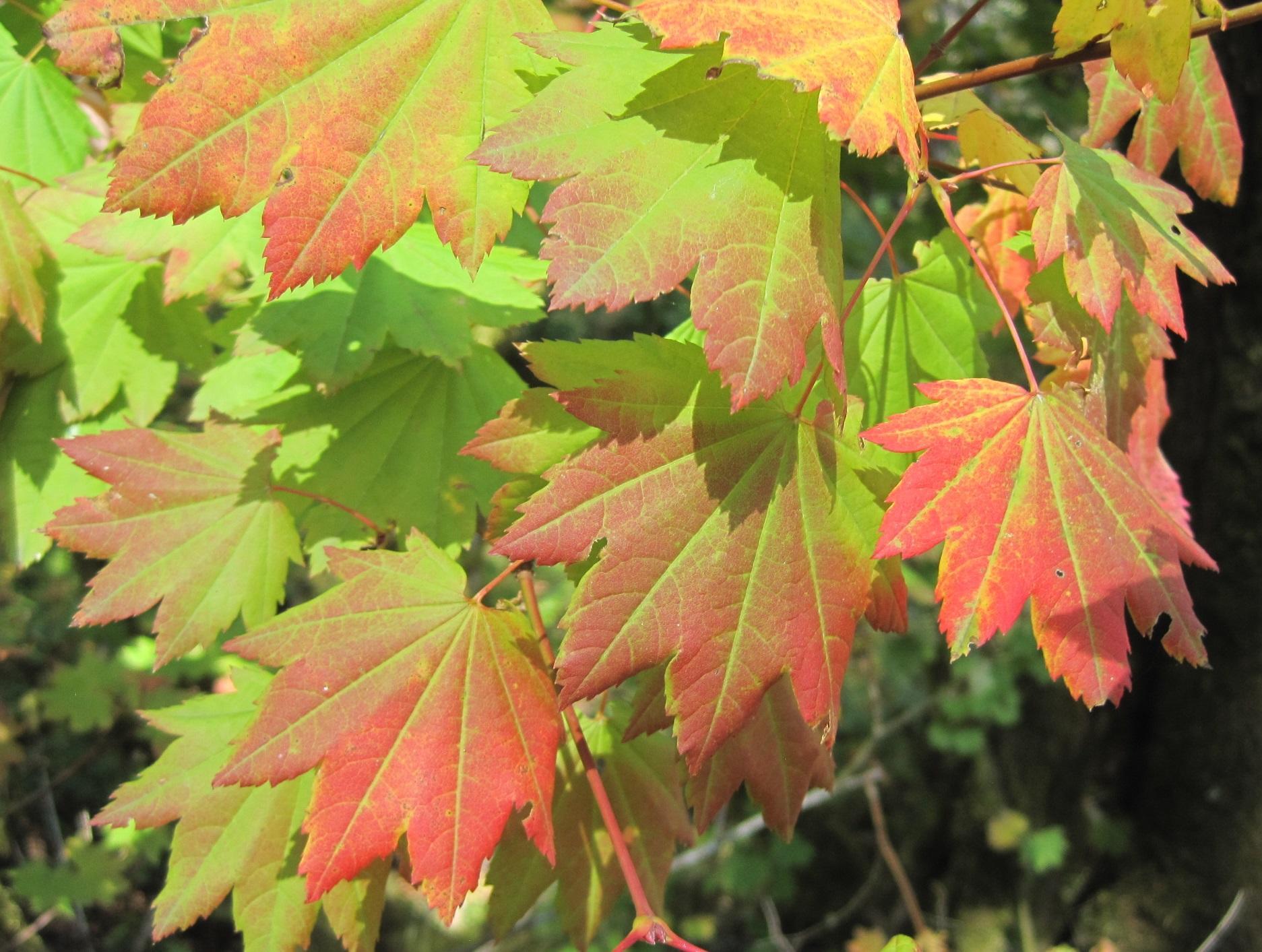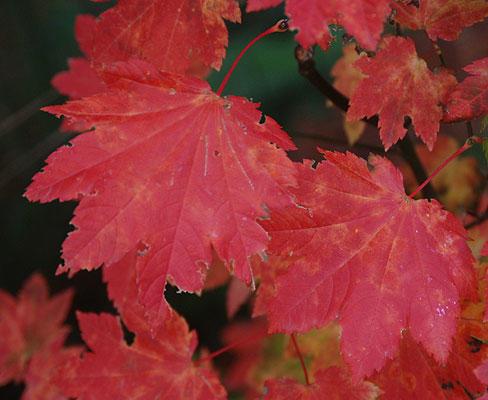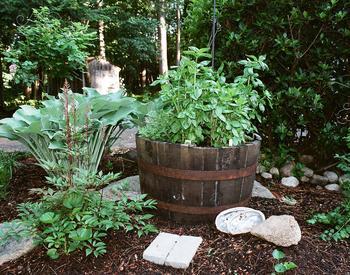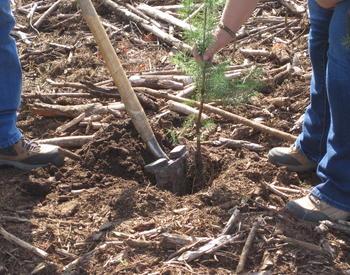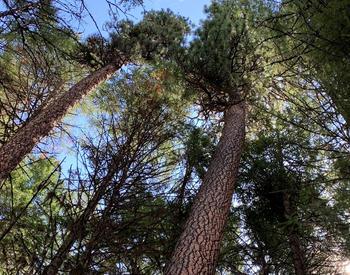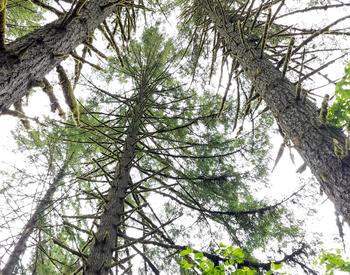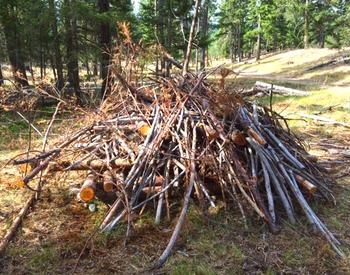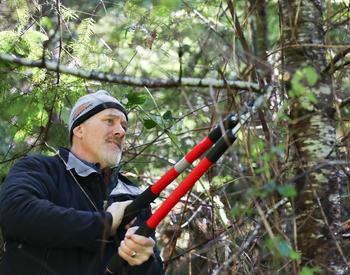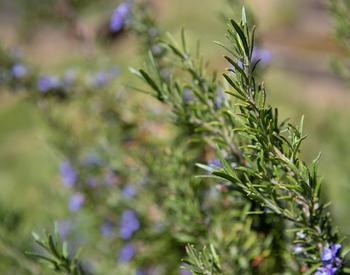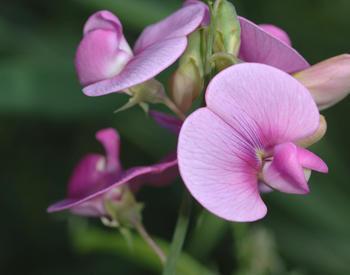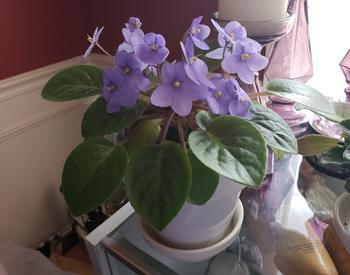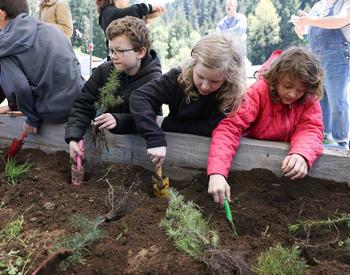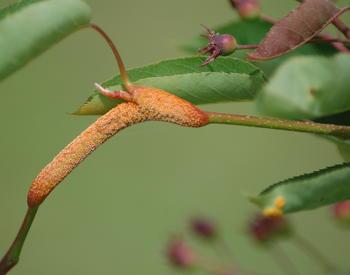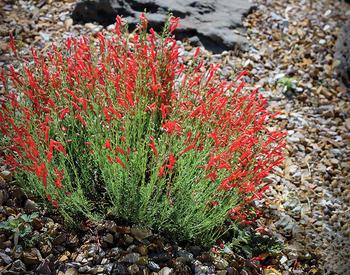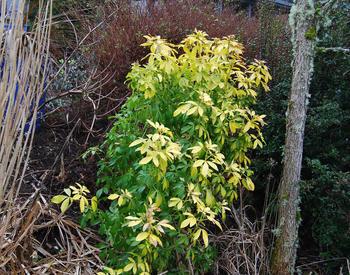Use the arrows to the right and left of the photo to navigate through the photos. Then the back arrow to return to the Educational Gallery home page.
Vine Maple
Vine Maple Phenophase Descriptions:
Breaking leaf buds
One or more breaking leaf buds are visible on the plant. A leaf bud is considered "breaking" once a green leaf tip is visible at the end of the bud, but before the first leaf from the bud has unfolded to expose the leaf stalk (petiole) or leaf base.
Leaves
One or more live, unfolded leaves are visible on the plant. A leaf is considered "unfolded" once its entire length has emerged from a breaking bud, stem node or growing stem tip, so that the leaf stalk (petiole) or leaf base is visible at its point of attachment to the stem. Do not include fully dried or dead leaves.
Increasing leaf size
A majority of leaves on the plant have not yet reached their full size and are still growing larger. Do not include new leaves that continue to emerge at the ends of elongating stems throughout the growing season.
Colored leaves
One or more leaves show some of their typical late-season color, or yellow or brown due to drought or other stresses. Do not include small spots of color due to minor leaf damage, or dieback on branches that have broken. Do not include fully dried or dead leaves that remain on the plant.
Falling leaves
One or more leaves are falling or have recently fallen from the plant.
Flowers or flower buds
One or more fresh open or unopened flowers or flower buds are visible on the plant. Include flower buds or inflorescences that are swelling or expanding, but do not include those that are tightly closed and not actively growing (dormant). Also do not include wilted or dried flowers.
Open flowers
One or more open, fresh flowers are visible on the plant. Flowers are considered "open" when the reproductive parts (male stamens or female pistils) are visible between or within unfolded or open flower parts (petals, floral tubes or sepals). Do not include wilted or dried flowers.
Pollen release
One or more flowers on the plant release visible pollen grains when gently shaken or blown into your palm or onto a dark surface.
Fruits
One or more fruits are visible on the plant. For Acer circinatum, the fruit is two joined seeds diverging in a straight line or a slight "V" shape, each seed having a wing, that changes from green to red or reddish brown and drops from the plant.
Ripe fruits
One or more ripe fruits are visible on the plant. For Acer circinatum, a fruit is considered ripe when it has turned red or reddish-brown and readily drops from the plant when touched.
Recent fruit or seed drop
One or more mature fruits or seeds have dropped or been removed from the plant since your last visit. Do not include obviously immature fruits that have dropped before ripening, such as in a heavy rain or wind, or empty fruits that had long ago dropped all of their seeds but remained on the plant.

